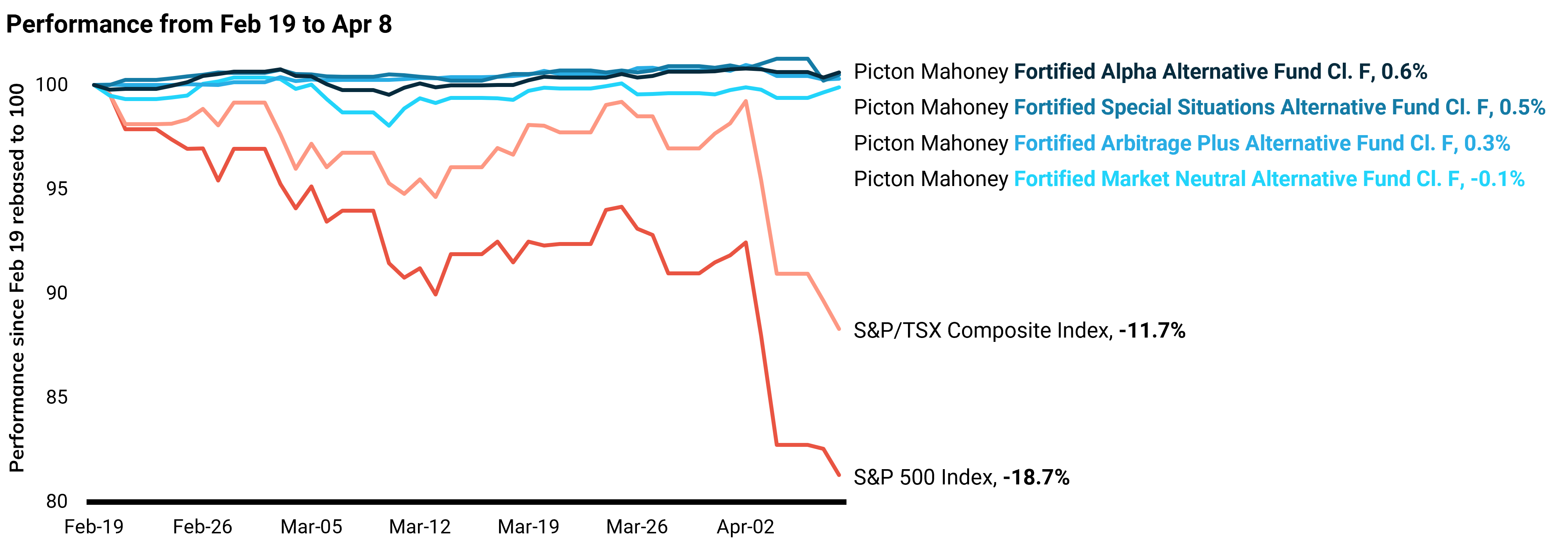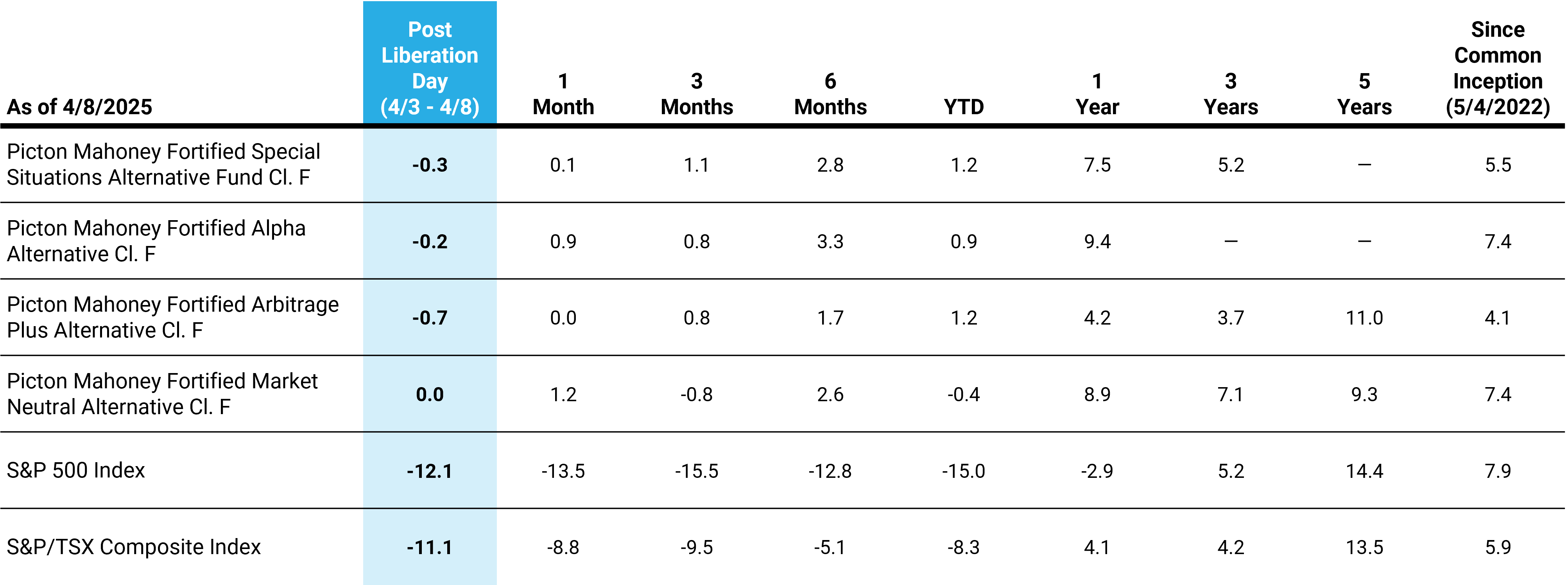The Bubble Has Burst. Now What?
At the outset of the year, we argued in The Picton Report that U.S. equities were a large and dangerous bubble. As with most bubbles, though, it’s only with hindsight that we can point to the catalyst that ended the party for good. Turns out, disastrous U.S. trade policy did the trick this time around.
Equities have suffered sharp losses since President Trump’s “Liberation Day” announcement last Wednesday April 2nd. The imposed tariffs represent a dramatic re-ordering of the global trade system—and raise the uncomfortable spectre of stagflation. If fully implemented, the average U.S. tariff rate could rise to its highest level since 1933—a time infamous for its own disastrous protectionism.
Expect Retaliation from Foreign Countries—and Pushback in the U.S.
The market remains highly sensitive to tariff-related headlines, which could cause significant volatility in the short run:
- The Risks of a Recession Have Increased: The tariffs have led to higher costs for businesses, reduced consumer confidence, and potential stagflationary conditions. If no off-ramp materializes, we will likely see a U.S. recession.
- The Potential for Retaliation is High: Other countries—especially those in more favourable bargaining positions—will likely impose retaliatory tariffs on the U.S. China, for example, has already announced a 84% tariff rate on U.S. goods.
- Congressional Action Could be a Positive: We’re starting to see pushback in both the House and Senate against President Trump’s tariff policies. This may be one avenue to avert disaster in the short term.
The Long-Term Effects Cannot Be Overstated
Beyond the short-term headlines, we believe the long-term consequences of the announced tariffs will prove monumental:
- Deglobalization and the New World of Stagflation: Globalization previously drove global growth and lowered inflation, but deglobalization—which we’re headed to— is expected to result in lower growth and higher inflation.
- The End of U.S. Exceptionalism: Trust in the U.S. is quickly evaporating, and that could spell the end of the long era of U.S. exceptionalism. The loss of trust will likely impact the U.S. economy negatively, reducing foreign investment and leading to decreased market multiples.
- Is the U.S. Dollar’s Dominance at Risk? We may look back years from now and realize that Liberation Day ultimately contributed to the end of the U.S. Dollar as the premier reserve currency of the world.
It’s a Bear Market: Act Accordingly
In bull markets, you buy dips. Alas, we think the ground has shifted and we’ve entered a bear environment. For advisors, that means thinking differently. In this environment it would be prudent to consider the following:
- Market volatility is likely to continue. Don’t read too much into short-term bounces based on the latest headlines. Instead focus on how the market trends have changed.
- Take a broader view of how you can manage risks within the portfolio and exercise patience.
- Pay attention to valuations. Just because markets have sold off, it doesn’t mean that markets are “cheap”, especially in a world of slowing growth and shrinking multiples.
We Prepared for This: Resilience Through Uncertainty
This is the moment a modern portfolio shines. Our firm has always focused on building resilient portfolios designed to navigate volatility, not just benefit from the upside. That preparation is proving its value now, with our strategies displaying resilience as the market falters.
Here’s how some of our strategies have performed during this period.
Mitigating Downside Risk When it Matters Most

Trailing Performance (%)

Highlights from Our Portfolio Managers and Strategy Teams
Equities:
- Covering key short positions: with a long/short strategy we have taken profits and covered our shorts for some of the high beta names that were very expensive and recently saw sharp declines.
- Taking advantage of volatility: for companies in key sectors that have attractive prices at these levels, we are using call spreads to control risk so we can capture some upside while limiting potential downside in case they fall further.
- Watching for near term risks: selectively adding protection with short-term options allows us to hedge for short-term risk events and may help add to relative performance.
- Seeking high quality growth names: looking for high quality names preferably outside of the U.S. that are likely oversold and offer attractive entry points for longer term holds.
Fixed Income:
- Our team had been adding to hedges in recent weeks, motivated by our concern that policy uncertainty could lead to economic slowdown. Out team also saw a massive equity-credit disconnect where the S&P 500 Index was down 10% but credit exposure was still positive on the year.
- We aggressively added to our credit hedges due to the complacency we observed among investors. Heading into April we had approximately $1.8B CAD in notional value on the high-yield market.
- We’ve been extremely active rolling hedges to reposition and keep protection on while taking profits out. We have put options on the high yield market and the investment grade market to catch follow through in credit (or rate selloff on resolution). We also have call option position to hedge against rapid U.S. Federal Reserve cuts in case things really fall apart.
Merger Arbitrage:
- While we don’t want to be dismissive of the trade war as a risk factor to our portfolio, tariffs are generally contemplated by definitive merger agreements. As a result, it’s hard to see the Liberation Day news rising to a level of a Material Adverse Event allowing buyers to walk away from deals (just like they couldn’t walk away during a global pandemic).
- During times of market stress, all risk spreads tend to widen, and we did see some arbitrage spread widening on Friday April 4th. We took advantage of this to add risk to shorter-dated deals. Historically this spread widening tends to be quite short-lived in merger arbitrage because the deals overwhelmingly do tend to close.
- As far as positioning, we are at our lowest merger arbitrage weight in many years: 45%in the Picton Mahoney Fortified Arbitrage Plus Alternative Fund with 1/3 of that being short-dated (less than 6 weeks).
Multi-Strategy:
- To where a typical balanced fund would be, Picton Mahoney Fortified Multi-Strategy Alternative Fund (F) performance was actually positive year-to-date to Friday April 4th We had started to shift from North American exposure into Europe and other places, which helped out in the equity baskets.
- We did have hedges going into the events of last week. We’ve essentially monetized most of those hedges and then switched out into something a lot further out into the tail just in case we do get even more capitulation.
- Overall, we are encouraged by how the strategy has performed thanks to the underlying components that have continued to provide diversification and allowed the strategy to remain resilient in the current market environment.
Hear Our Latest Thinking
In case you missed it, below is a link to our live webinar with David Picton on April 15th that discussed how we’re positioned and where we see opportunities ahead in these tumultuous times.
Thank you for your continued partnership, and your belief in our strategies. We’re proud to deliver on the promise of preparation — and to support you in delivering certainty to your clients so they can achieve their investment goals.
Download our investor-friendly commentary to share with your clients





